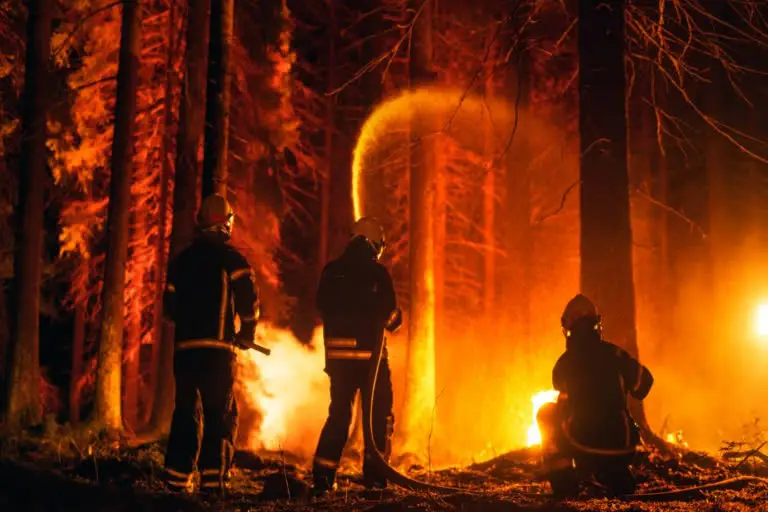National Fire Service Day 2025: Honouring the Bravehearts of the 1944 Bombay Dock Explosion
Every year on April 14, India pays tribute to its firefighting heroes by observing National Fire Service Day. This solemn day commemorates the ultimate sacrifice of the fire personnel who lost their lives battling a catastrophic blaze caused by a series of explosions in Bombay (now Mumbai) during the Second World War. The tragedy, which struck in 1944, remains one of the deadliest industrial accidents in India’s history.

As we mark National Fire Service Day 2025, it is important to reflect not just on the event itself but on the lessons it offered about fire safety, emergency response, and the incredible courage of those who put their lives on the line.
What Happened on April 14, 1944?
The disaster took place at the Victoria Dock in Bombay, then a bustling wartime port. The British merchant vessel SS Fort Stikine had docked at the harbor carrying an extremely hazardous cargo mix. The ship was loaded with around 1,400 tons of explosives, 800 tons of sulfur, cotton bales, lubricating oil drums, timber, scrap metal, and even gold bullion—a volatile combination that would later prove catastrophic.
On the afternoon of April 14, a fire broke out in one of the ship’s cargo holds. Despite the best efforts of the fire brigade, the blaze intensified rapidly due to the highly flammable materials on board. At exactly 4:06 PM, the first massive explosion rocked the dock, sending shockwaves across the city. A second, even more powerful blast occurred approximately 30 minutes later.
A City in Chaos: The Human and Structural Toll
The explosions flattened much of the dockyard and caused widespread destruction across nearby neighborhoods. Flames engulfed warehouses, offices, homes, and ships moored nearby. Estimates suggest that between 800 and 1,300 people perished in the incident, while over 2,500 were seriously injured. Among the dead were numerous firefighters who had arrived first at the scene and bravely tried to contain the fire.
The blast also damaged or destroyed over 80,000 tons of cargo and ships, crippling port operations for weeks. Entire streets were turned to rubble, and the smoke-filled skies bore witness to a disaster unlike any other.
Why the Tragedy Happened
The SS Fort Stikine was essentially a floating bomb—though many at the time didn’t realize it. One of the key failures was the lack of communication and awareness about the ship’s dangerous contents. Most dock workers, firefighters, and even nearby residents had no idea of the threat the vessel posed. As a result, no large-scale evacuation was initiated in time.
Moreover, firefighting equipment and safety protocols in 1944 were far less advanced than they are today. The fire services, though valiant in their efforts, were outmatched by the sheer scale and intensity of the incident. Their heroic response came at an enormous human cost.
Lessons That Shaped the Future
1. Need for Hazard Awareness at Ports
The explosion underscored the importance of clearly declaring and labeling hazardous materials on ships, especially in busy commercial ports. Today, international maritime law requires full disclosure of dangerous goods and mandates proper training for port personnel.
2. Stricter Regulation and Oversight
One of the major outcomes of the disaster was the tightening of regulations around the handling, storage, and transport of explosives and chemicals. Modern ports operate under rigorous safety standards, with specialized zones for risky cargo and continuous monitoring to avoid similar catastrophes.
3. Emergency Preparedness and Rapid Response
The 1944 incident proved how critical it is to have detailed emergency evacuation plans, especially in densely populated urban areas. Since then, Indian cities have built more structured response frameworks involving coordination between fire services, police, port authorities, and medical teams. Fire safety drills, evacuation protocols, and public awareness campaigns are now part of standard procedures.
4. Investment in Firefighting Infrastructure
The courage displayed by firefighters during the Bombay Dock explosion sparked significant investment in firefighting technology, protective gear, and training programs across India. Specialized fire units for industrial and chemical fires have since been created, and modern equipment has been deployed in major ports and cities.
Why We Observe National Fire Service Day
National Fire Service Day is not only a tribute to those who laid down their lives in 1944—it is also a recognition of the continuous risk that firefighters face daily. These brave men and women respond to emergencies that most would run from. Whether battling urban fires, industrial accidents, or natural disasters, firefighters are often the first line of defense between chaos and safety.
Across India, fire stations commemorate this day with memorial services, parades, and fire safety demonstrations. Schools, colleges, and offices participate in awareness campaigns and mock drills to promote fire safety education and emergency preparedness among citizens.
A Tribute That Inspires Preparedness
The Bombay Dock Explosion serves as a grim reminder of what can go wrong when fire risks are underestimated or mishandled. But it also stands as a shining example of human courage and the resilience of first responders. Each year, National Fire Service Day renews our commitment to safety, training, and honoring the legacy of those we lost.
Final Thoughts
As we observe National Fire Service Day 2025, let us not only look back on a devastating event from history but also look forward—by strengthening our emergency systems, educating the public, and ensuring that no such tragedy happens again. The bravery of the firefighters who faced the inferno at the docks in 1944 will never be forgotten, and their sacrifice continues to inspire generations.
Their legacy lives on—not just in memorials, but in every life saved by a firefighter’s quick action.






